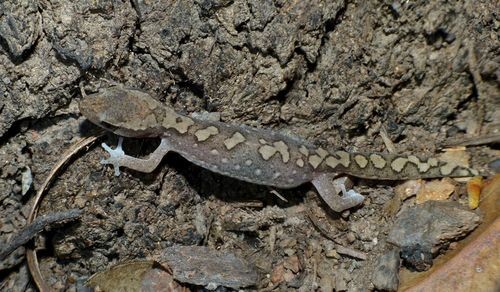Eastern stone gecko
A species of Australian ground and stone geckos, Also known as Stone gecko Scientific name : Diplodactylus vittatus Genus : Australian ground and stone geckos
Eastern stone gecko, A species of Australian ground and stone geckos
Also known as:
Stone gecko
Scientific name: Diplodactylus vittatus
Genus: Australian ground and stone geckos
Content
Description General Info
 Photo By steve_kerr , used under CC-BY-4.0 /Cropped and compressed from original
Photo By steve_kerr , used under CC-BY-4.0 /Cropped and compressed from original Description
Diplodactylus vittatus, known as the wood gecko or eastern stone gecko is a small gecko found in New South Wales and Queensland. It usually eats insects around dusk, and shelters under cover during the day. When threatened, this species opens its mouth and stands up on all four legs. The eastern stone gecko reproduces during spring and summer (September to March). They have a maximum clutch size of two eggs but can have multiple clutches throughout...
General Info
Lifespan
8-15 years
Diet
Eastern stone gecko's diet primarily consists of small invertebrates, with a particular preference for insects. It exhibits nocturnal feeding habits, foraging for food under rocks and logs during the night hours.
Appearance
Eastern stone gecko is a small, thick-bodied gecko with skin characterized by a rough granular texture. Its primary coloration is a striking combination of dark brown and cream, arranged in bands across its body. The tail is round and short, distinctive in geckos. Feature scales known as 'tubercles' are present on the upper surfaces, giving them a spiky appearance. No significant differences in appearance due to age, gender, or subspecies are reported.
Behavior
Eastern stone gecko is predominantly nocturnal, emerging from hiding spots in rocky crevices at dusk. This species displays unique social behavior, often living in small colonies with shared toilet areas. Notably, eastern stone gecko is an oviparous species, producing hard-shelled eggs that are generally laid in moist areas. The species is also known for its distinctive tail-waving behavior, used as a communication and intimidation tactic.
Scientific Classification
Phylum
Chordates Class
Reptiles Order
Lizards and snakes Family
Australasian geckos Species
Eastern stone gecko